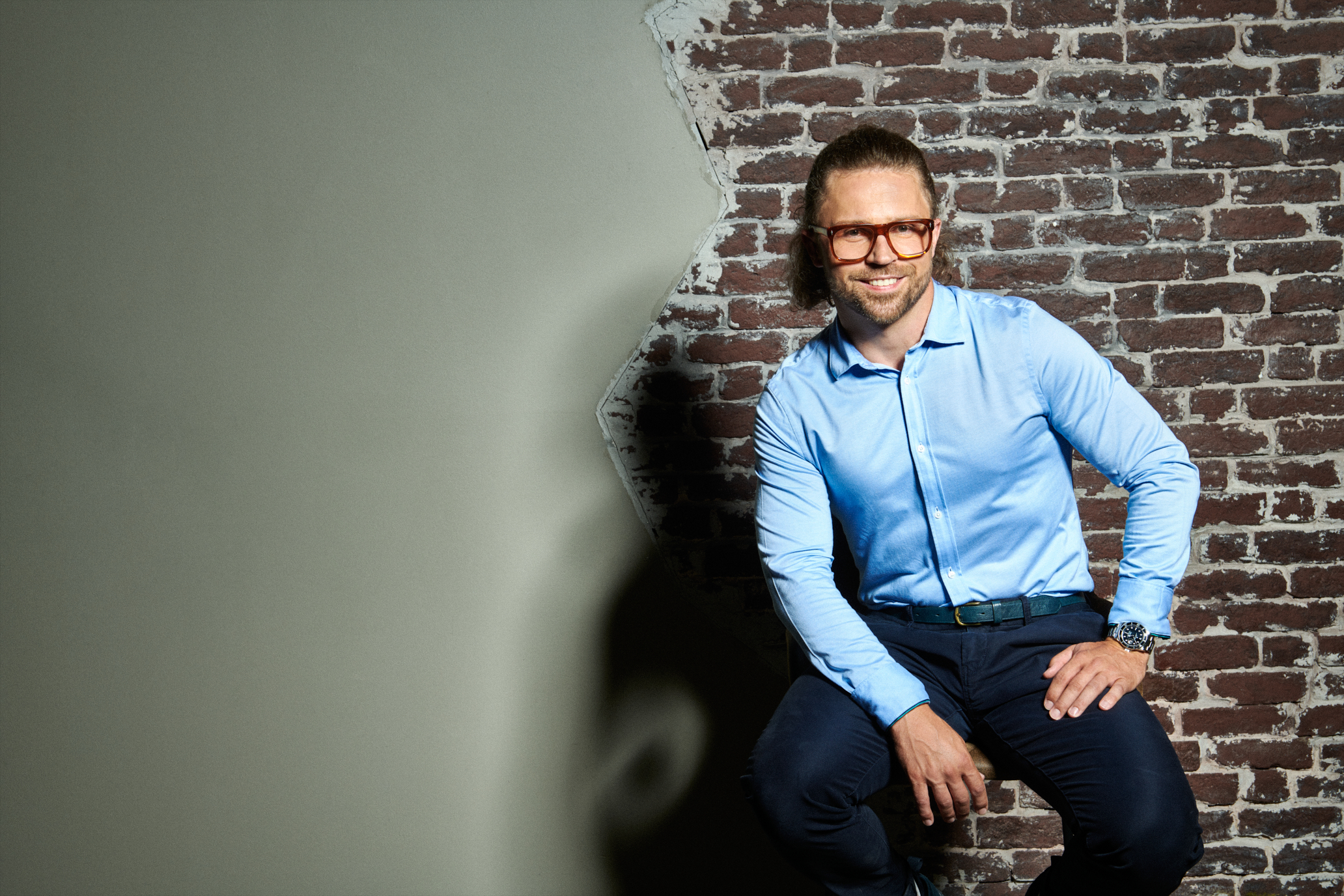
Hofman: The dark ages for industrial development are over. Sustainable campuses with green energy are more attractive for tenants.
The Urbanity real estate group has been focusing on sustainability in its production campuses since its inception. It confirmed
its focus at the end of last year by placing in the ESG Rating rankings announced by the Association of Social Responsibility,
where it was the first real estate company to appear. It also took two first places from last year's Estate Awards. Its Urbanity
Campus Tachov production complex won in the category of Sustainability and Ecology and also came in first in the Industrial
Project of the Year category.
You can read about why it is worth investing in sustainable technologies and working with the local community, as well
as the benefits of ESG reporting, in an interview with Roland Hofman, co-founder and CEO of Urbanity.
You are focused on building sustainable campuses. How did this idea come about?
We are building on the historical heritage of suburban production complexes, which we revitalise in a sustainable and socially-responsible
way. In recent decades, these grey boxes have been created in the vast majority of greenfields, and I consider this to be
the dark ages of industrial architecture. Therefore, we take an above-standard approach to our campuses from the point of
view of architecture, whether in urban design, the design of façades and furniture, and also landscaping.
Some associate the emphasis on sustainability with the fact that the whole construction is significantly more expensive.
Does an orientation on green technology also make sense to you economically?
Our approach is well thought out and sophisticated, which makes it more expensive, but because our priority is not to build
and sell projects quickly, we can afford it. On the contrary, we focus on a permanent vision, which we have in all our locations.
The higher initial investments also return to us in different ways than in purely financial terms. We know that we can fill
up the premises more easily, faster and with longer rental periods, because they are more interesting and of good quality.
Who primarily uses your campuses and what distinguishes these campuses from traditional production complexes?
We look at industrial development comprehensively, but our focus on production companies requires a different approach than
when logistics parks are built by motorways. We perceive the employees, i.e. the real users of the campus, who spend time
in it not only during their working day, as the end customer and we subordinate a number of things to that end.
In the context of sustainable construction, in addition to the implementation of specific buildings, there is also talk about
broader care of the site. Are civic amenities and ample infrastructure, for example, topics for you?
We concentrate on making sure the campus allows employees to spend quality time during the day and also before and after
work. Making sure there are enough related services so that employees can spend an hour or two outside of work in the campus
is related to this. Whether they accompany their children to or from preschool, go to the local fitness centre, buy food or
go to a café.
Are these services only available to tenants in the complexes or to the general public, as well?
We pointedly integrate our campuses into the life of the towns where our projects are created. It is therefore easy for anyone
to go to a café or a restaurant on campus, or to go to a fitness centre. The services are accessible to the general community,
which fully fits into our vision. This was a common approach historically several times and it was considered the standard.
It has disappeared in recent decades in industrial construction, though there is no reason for it. We are trying to change
this view.
In 2022, you presented your ESG strategy and last year also published the first Urbanity group ESG report. What led you to
do this?
We consider setting up an ESG strategy and following up on our goals and reporting on how we stand to be a natural part of
our direction, it is one of the means of self-reflection for us. We don't want to just plant trees around our production halls
and boast that we have done something for nature. We want to do things so that they have a real positive impact on local communities,
on the employees who work in our campuses and, of course, we also strive to truly mitigate the negative impacts on the environment
and to even have a positive effect wherever possible.
But to get back to the question, ESG reporting is a way to set measurable goals, monitor them and evaluate them, while at
the same time transparently letting our business partners, clients and investors know that it is not greenwashing. That we
are really on the path to greater energy self-sufficiency and long-term economic and environmental sustainability. Our clients
can see that we have our own renewable energy sources, that our buildings are of a high standard, that we manage water ecologically,
that we develop employees and work with the local community and much more.
Thanks to this, you have also succeeded in the Association of Social Responsibility's ESG rating.
We really appreciate this. It is a confirmation that the Urbanity Group is on the right path. But what we appreciate even
more is that we can see the real effects on our tenants, who need to demonstrate in their own reports to customers that their
products are produced under environmentally-friendly conditions or that they provide quality facilities to their employees.
Gradually, we will be able to provide them with more accurate and detailed data. We are currently preparing the follow-up
ESG report for 2023 with Frank Bold and I believe we will show how we have moved closer to our long-term goals in just a year
of work.
These days, the renewable energy sources you mentioned, as well as self-production and energy sharing, are experiencing a
big boom. What energy solutions do you use in your projects?
We have our own Urbanity Energy division, which deals with energy solutions and the infrastructure in our campuses. We know
how to supply tenants with energy from local renewable sources, so we help them fulfil their sustainability commitments. From
this perspective, we see energy as a strategically important part of our business. Specifically, in our project in Tachov
we created a community energy block, thanks to which the production tenants will use green energy to the maximum extent. It
is currently the largest rooftop power plant in the Czech Republic, now a large-capacity battery storage facility. Green energy
covers more than 40% of the consumption of the production complex in Tachov.
Do you plan to use wind energy in the future, as well?
We are now analysing the potential of suburban wind energy with the aim of installing smaller wind sources in the campuses,
whether on roofs or in building gaps. Altogether, we could then cover something on the order of half the annual electricity
consumption on the campus.
